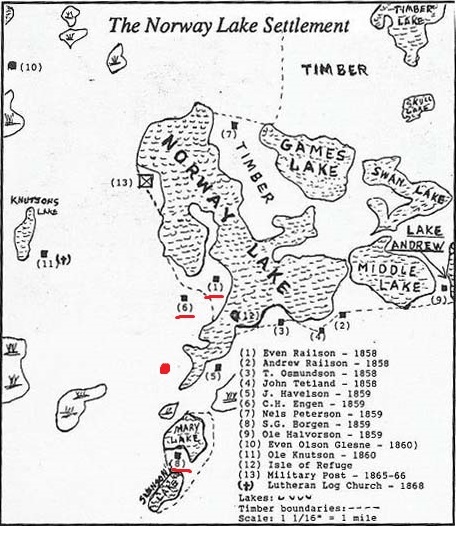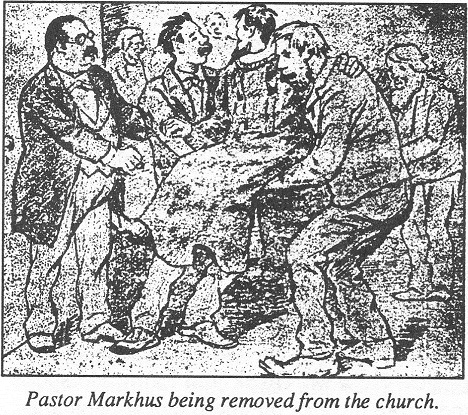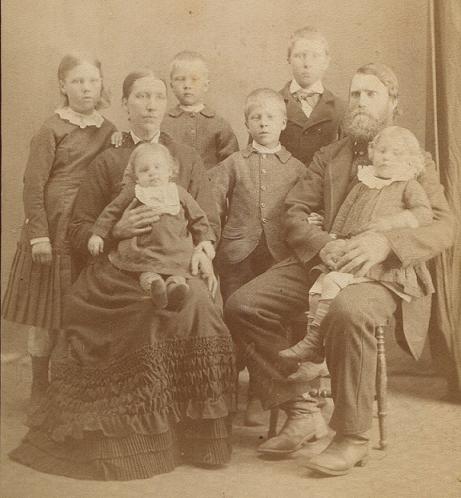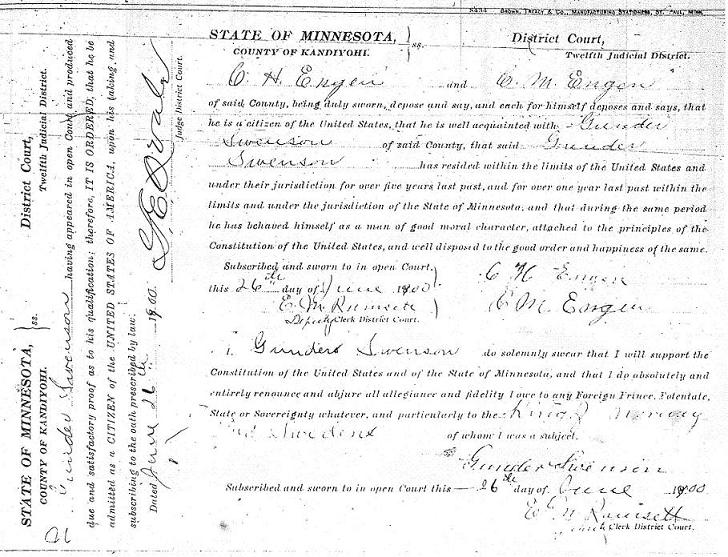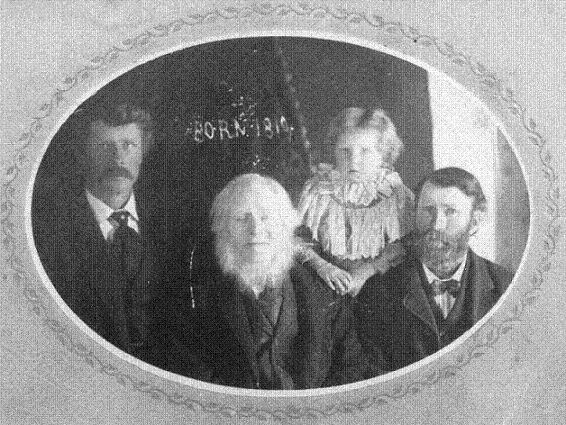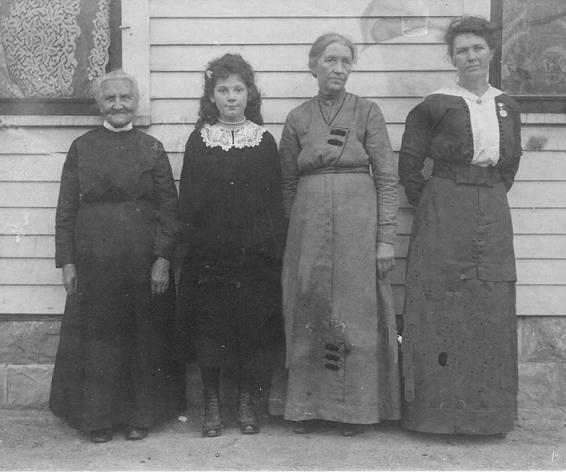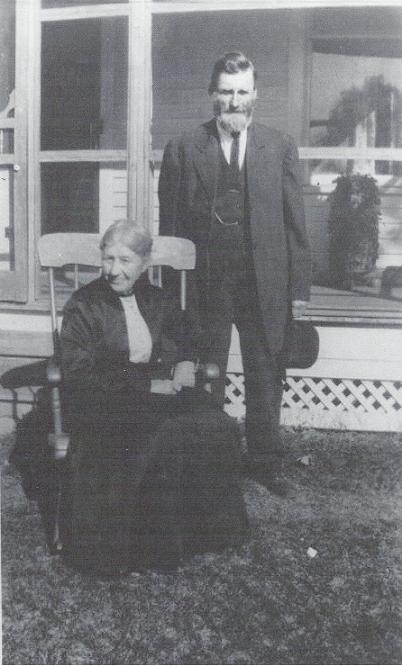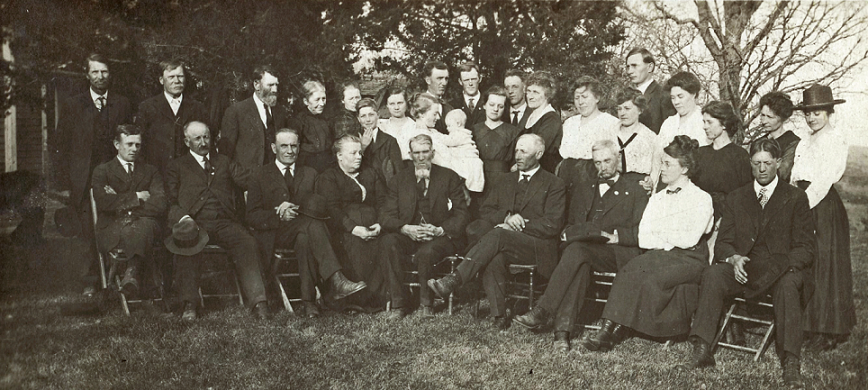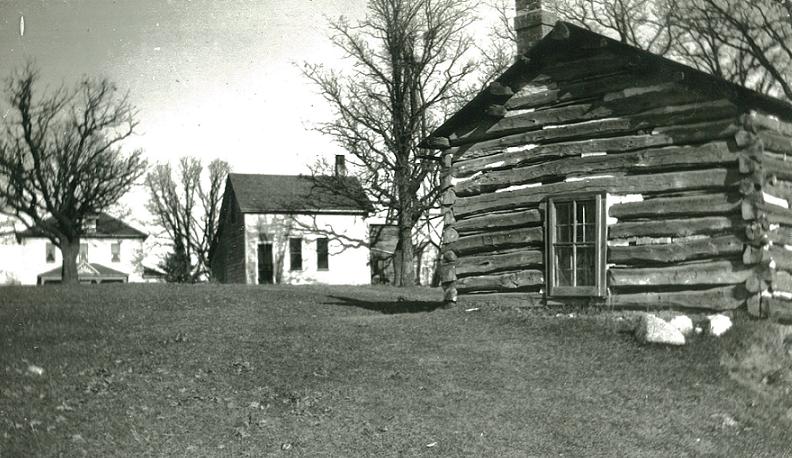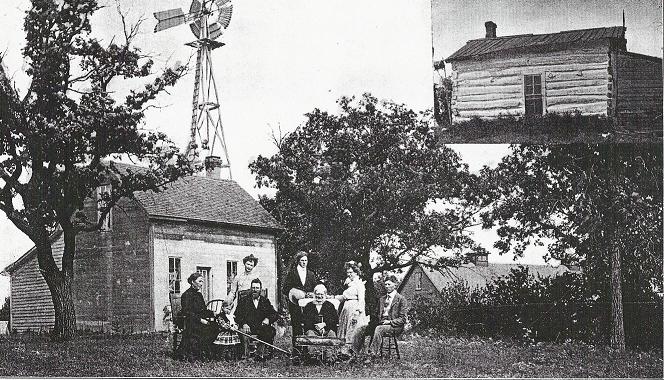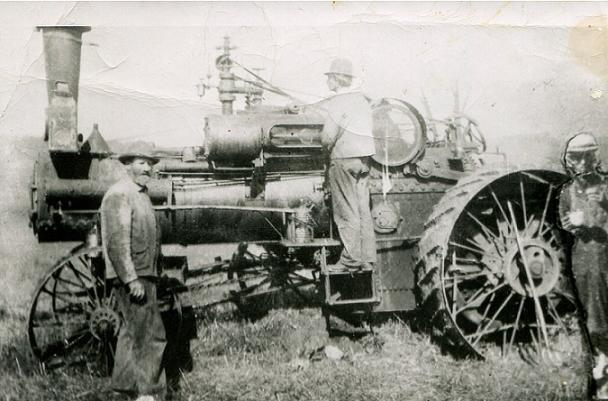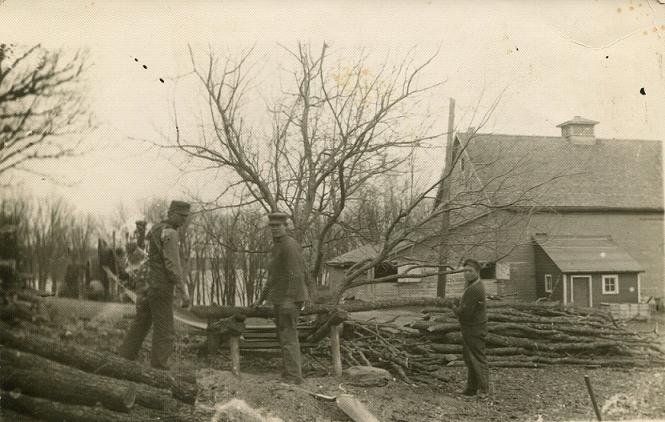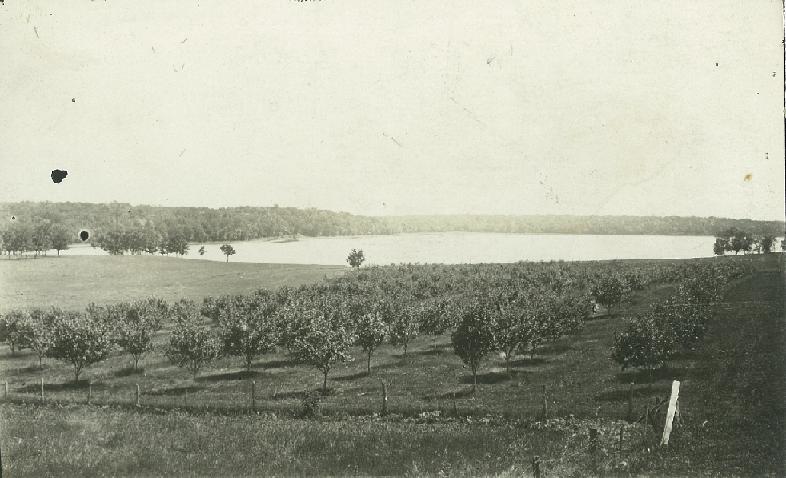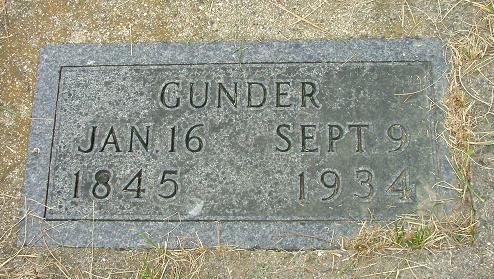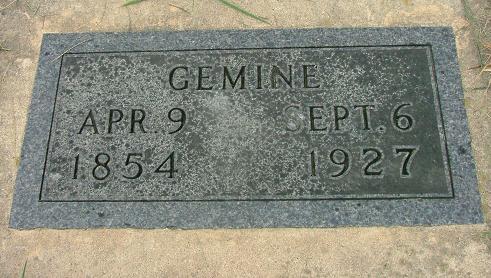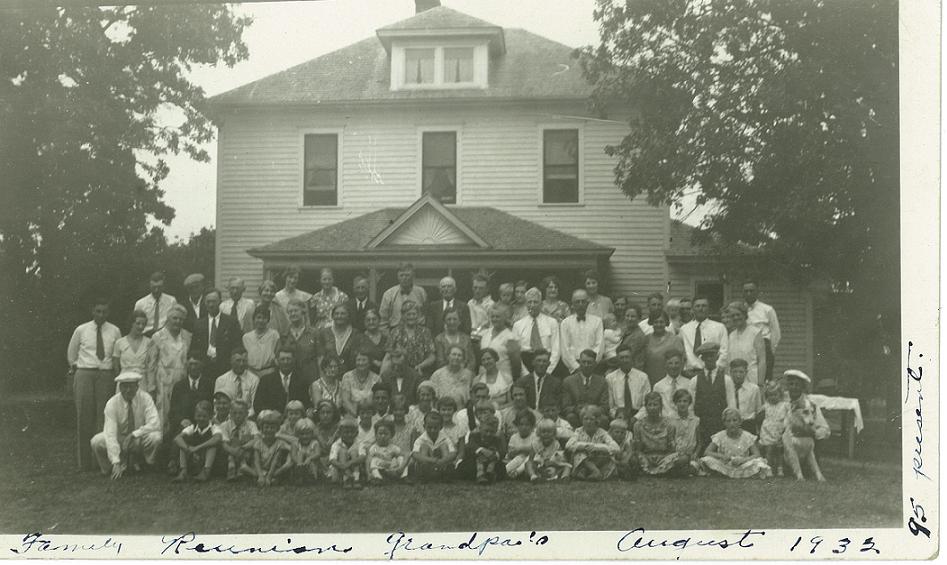Mankell Family History
Maps of ancestral homes in Norway
Gunder Swenson (1845-1934) and Gemine (Negaard) Swenson (1854-1927)
Halvor (1827-1876) and Martha (Tharaldsdatter) Negaard (1828-1918)
Main sections in the Swenson and Negaard webpage:
- MARRIAGE AND CHILDREN
- NEGAARD FAMILY IN NORWAY
- NEGAARD IMMIGRATION
- NEGAARD FAMILY LIVING IN ARCTANDER TOWNSHIP
- GUNDER AND GEMINE SWENSON
- Blizzard of 1873
- East Norway Lake Lutheran Church
- Descendants
- Farm Life
- Deaths of Gunder and Gemine
MARRIAGE AND CHILDREN:
In 1871 immigrants Gunder Swenson and Gemine Negaard married in Kandiyohi County MN. Gunder was the son of Sven and Margit Borgen; Gemine, the daughter of Halvor and Martha Negaard. The children of Gunder and Gemine Swenson:
- Swen (1872-1942) married Guri Hande
- Henry (infant) (1873-1873)
- Minnie (1875-1959) married Oscar Mankell
- Henry (1877-1948) married Nellie Larson
- George (1879-1960)
- Clara Randine (1880-1982) married Olaf M (OM) Berg
- Anna Maria (1883-1971) married Axel Quale
- Otto (1885-1943)
- Melvin (1887-1965) married Clara Thorson
- Gerhard (1889-1977) married Manda Boe
- Mable Theoline (1891-1917)
- Lydia Bergitte (1893-1957) married Charles H Brace
- Helen Emelia (1895-1979) married Fred Lamphere
- William Bernard (1900-1954) married Lillian Larson
NEGAARD FAMILY IN NORWAY
Gemine Negaard was a Norwegian who had lived on the Negård farm in Stor-Elvdal, Osterdalen Valley, Hedmark, Norway, (see maps of family farms in Norway) just as many generations of her ancestors had done. Gemine's parents were Halvor Olsen Negaard (1827-1876) and Marthe (or Martha) Tharaldson/Tharaldsdatter (1828-1918). There are at least four "Negård" farms in Stor-Elvdal, with the mother-farm known as the North Negård. The mother-farm was divided several times so that land could be passed to younger family members. The mother-farm is first mentioned in 1520, though it is believed to have been quite old at that time. In 1528 Halsten Negård, the first recorded owner, paid a tax of 12 shillings on the farm. Following Halsten, generations of Negaard families have lived on the Negård farms. Several generations after Halsten, in 1816, Halvor O. Negaard's parents married. Mother Guri Olsdatter Negård grew up on the farm and married Ole Halvorsen. The couple remained on the farm, Ole took the farm name, so the family was known as Negård. (In America the spelling is Negaard.) For centuries it has been common practice for Norwegian families to take the farm name as their last name.
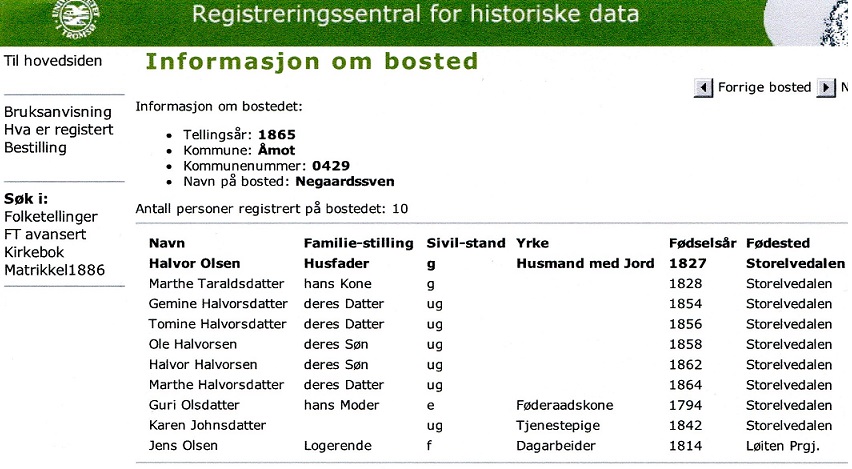
1865 Norway Census lists family at the Negaard farm, Stor-Elvdal Norway
Includes Halvor's mother Guri Olsdatter
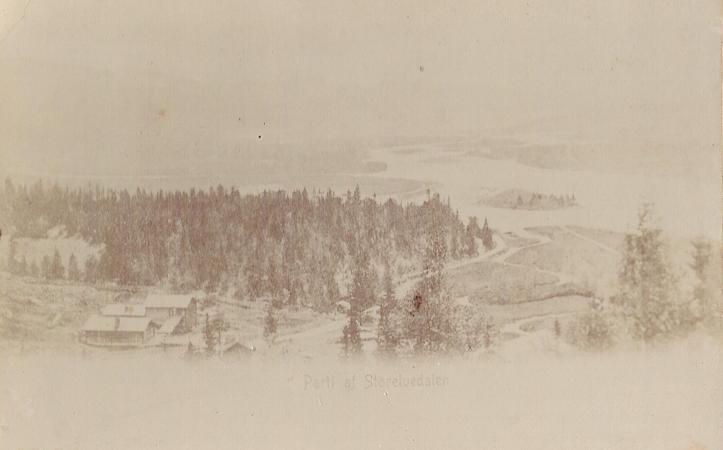
Stor-Elvdal, Osterdalen Valley, Hedmark, in Norway
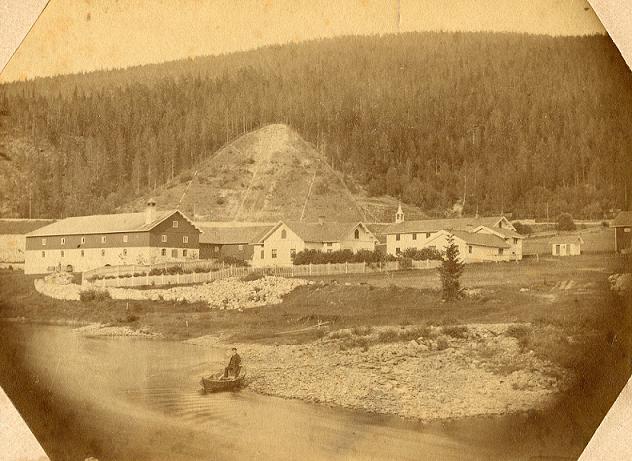
Negaard farm (c1880) in Stor-Elvdal, Osterdalen Valley in Norway
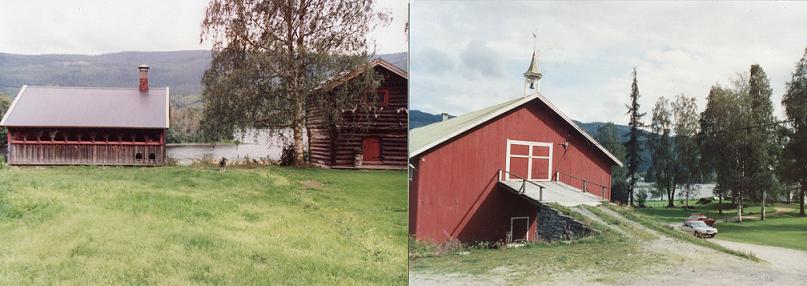
Negaard farm (c1980) in Stor-Elvdal, Osterdalen Valley in Norway
NEGAARD IMMIGRATION
On 26 April 1870, Halvor, Martha, their children, and Halvor's mother Guri Olsdatter left their home, the Negård farm, and emigrated from Norway; they arrived in Quebec on 20 June 1870 on the sailing ship Columbia. Gemine was 16 years old. Soon after they traveled to and settled in Arctander Township, Kandiyohi County, MN. Halvor applied for an 80 acre homestead and the family received a homestead/land patent in 1880: NE 1/4 of Section 30, Arctander Township (121N 36W) filed with the Government Land Office as "Halvor Olson". The children of Halvor and Marthe Negaard:
- Gemine (1864-1927) married Gunder Swenson
- Tomine (1856-1932) married E P Truedson
- Ole H (1858-1919?) married Anna surname?
- Gjorand (1860- ) married Bernhard Tostad. Lived in Norway
- Halvor (1862- )
- Martha (1864-1870) died soon after immigration
- Hannah (1867-1916) married Erickson
- Martin (1870 or 1871-)
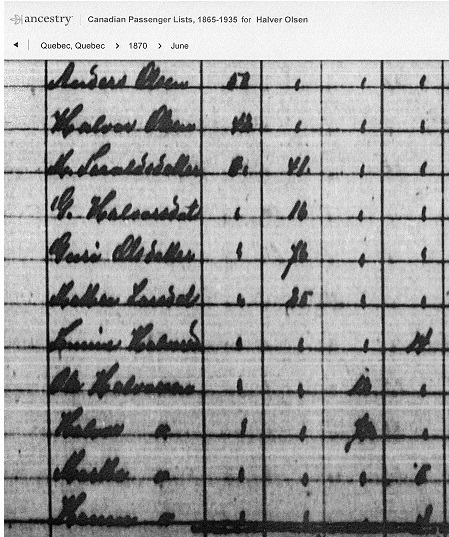
Negaard family--Passenger List for ship Columbia, 20 June 1870.
Source: Canadian Passenger Lists, 1865-1935.
NEGAARD FAMILY LIVING IN ARCTANDER TOWNSHIP
Sometime between 1875 and 1880, father Halvor died leaving Marthe a widow. Sons Ole Negaard and (later) Halvor took over the farm, located in far west border of Arctander Township, Kandiyohi County MN. Marthe lived on the farm until the early 1900s when she moved to Puyallup, Pierce County, Washington to live with her daughter, Tomine Truedson, and her family. Marthe's granddaughter, Clara Swenson (daughter of Gemine) was living with the Truedsons at the time. At the time of her death in 1918, Marthe was back in Arctander Township, living with her daughter Gemine Swenson and family.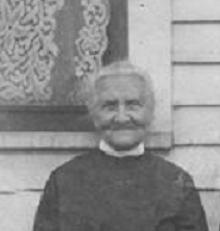
Martha (Marthe) Negaard, c1917.
Gemine's mother, Martha Negaard died on January 19, 1918. Local historian and columnist Gabriel Stene wrote her obituary for the Willmar Tribune:
Another old pioneer, Mrs. Martha Negaard, responded to the call of Death Saturday morning, January 19, at the ripe old age of ninety years. She had been weak and feeble for some time, still Death came unexpected as she was seated in a rocking chair. Her steps over the threshold was to her like going into a natural sleep. Such ended the life of a noble woman, good neighbor, and a true Christian, loved and respected by all. She always had a smile and a cheery word for everyone. She was kind and would rather stand a loss than refuse a favor asked in time of need. Her memory will long live in this neighborhood.
Martha Negaard was born November 16, 1828, in Stor-elv dalen, Norway, where she grew to womanhood. In 1853 she was married to Halvor Negaard of the same place. The family emigrated to America in 1870 and like other frontier people, took up the struggles of pioneer life. Her husband died in February, 1876. Since then, she farmed with the help of her children and always made her home here with the exception of visits with some of her children. The union was blessed with eight children, three of whom have preceded her. These were (Hanna) Mrs. Erickson of Chicago, (Gjorand) Mrs. Bernhard Tostad of Norway and Martha of this place; those surviving are (Gemine) Mrs. Gunder Swenson with whom she made her home, (Tomine) Mrs. E.P Truidson of Puyallup, Washington; O. H. Negaard of St. Paul; Halvor Negaard of North Dakota and Martin Negaard of Kerkhoven. There are twenty-four grandchildren and sixteen great grandchildren. All relatives were present at the funeral with the exception of Mrs. Truidson and Mrs. Berg and Horace Negaard of Washington, Mrs. Lempher [Lamphere] and Otto Swenson of Buffalo, S. Dak., and Mrs. O.H. Negaard of St. Paul.
The pallbearers were six grandsons, S.G. Swenson, Henry Swenson, Melvin Swenson, George Swenson, Clarence Negaard and Arnold Negaard. The remains were laid to rest by the side of her husband in the East Norway Lake cemetery. The casket was covered with flowers, giving testimony to the love and respect she was held in by all who knew her. Long live the memory of Grandma Negaard!Findagrave.com entry for Martha Tharaldson/Tharaldsdatter Negaard
Findagrave.com entry for Halvor Negaard
GUNDER AND GEMINE SWENSON IN ARCTANDER TOWNSHIP:
Gunder Swenson and Gemine Negaard Swenson. These photos are undated.Blizzard of 1873
On January 7, 1873 a severe blizzard hit the midwest and Minnesota, including Kandiyohi County, and lasted for 3 days. Twelve people died in the county and many others were injured and faced the loss of hands, feet or legs due to frozen extremities. While not injured, Gunder Swenson was not home with the snowstorm suddenly hit; he was about 2 miles north of home. His 18 year old wife Gemine and baby Swen (born October 1872) were home at their homestead south of Lake Mary; she must have been so worried about the fate of her husband because it was several days before he arrived safely home. Here is a part of Gunder's story as written by local historian Gabriel Stene, in the Willmar Weekly Tribune:
It was in the winter of 1872-73, January 7th, a fine beautiful morning which lured so many out on their routine doings. Some to town, some for wood and hay, and some for visiting. Even Railson, being the first to bring a little horse power threshing maching in to this county, was also the first to bring in to this county a steam threshing outfit. Threshing that year was a rather slow process, owing to a fairly good crop and few machines some was left till after the holidays...I made up a load of grist to go to the Swift Falls Mill, Swift Co., as the New London Mill was overcrowded. Starting off that beautiful morning, I overtook Gunder Swenson and Halvor Hande, both armed with pitchforks to go over to help Even Railson thresh his grain, the finishing job...There is more information about the January 1873 blizzard in Kandiyohi County and the 12 deaths.
When the snow storm struck them, Gunder Swenson and Halvor Hande started for home, but getting beyond the grove found it impossible. Swenson was well acquainted and knew by finding an old rail fence that they could follow it to the stables of his brother-in-law, Christoffer Engen, and then to the house. Swenson had a younge wife of eighteen at home and a baby boy who today answers the roll call of Sven [sic Swen] G. Swenson. But [Gunder] had a good chore man (Erick Mehus) and found himself at home with his sister [Ragnild Engen].
Halvor Hande had a wife and small children at home and it was a hard job for them to keep Hande from going. He said, "It's only a mile, I can make it." But the fact was that not one out of a hundred could have done it without fences or anything to go by. They stayed there those long three days and three nights. In that cold still morning they returned to their respective homes, finding all well under the circumstances.
Map identifying farms mentioned in Stene's essay
(1) Even Railson; (6) Christopher Engen; (8) Gunder Swenson; red dot, Halvor Hande
East Norway Lake Lutheran Church
Gemine and Gunder were members of East Norway Lake Lutheran Church, located in Jericho, just north of their homestead. (Both are buried in the church cemetery, as are Gunder's parents Sven and Margit Borgen and Gemine’s parents, Halvor and Martha Negaard) In 1875 Gunder helped build the church when the congregation had outgrown the log church located near the Ole Knutson cabin. The congregation decided to divide into two separate congregations: West Norway Lake which served the families closer to Sunburg, and East Norway Lake which served the settlers closer to the Norway Lake settlement. The first worship service was held in the new church in early 1876. Gunder and Gemine's oldest daughter, Minnie, was the first baby baptized in the new building. Gunder was one of the first Trustees of the new congregation and by 1885 found himself in the middle of a contentious period in the congregation, part of the Norwegian Synod.
Beginning in 1870s the Norwegian Synod experienced several controversies, including the theology of predestination. The difficulties filtered down to the congregations, including East Norway Lake Lutheran. Pastor Lars Markhus, pastor at this congregation, found himself in the middle of the controversy during July, 1885. Here is the timeline of events, as described in "Keeping the Faith, Sharing the Faith", a history of First Lutheran Church of Norway Lake:
July 8, 1885: The Trustees of the congregation asked that Pr. Markhus turn over the keys to the church, which he did.
July 16: Pr Markhus and several men removed the locks to the church building, installed new locks, and took the keys.
July 17: Pr Markhus and the men locked themselves inside the church.
July 18: The Trustees retook possession, but the Pastor and men refused to leave.
July 24: The Trustees were again in control of the buliding and had keys to another new set of locks. The Pastor and men wrenched open windows and doors to enter the building. The pastor performed his ministerial duties of teaching a confirmation class and said that he would continue to enter the building to hold religious services.
July 24: The Trustees carried Pastor Markhus out of the church. Gunder Swenson is said to have been one of these Trustees.
According to Pr Markhus, the trustees "wrongfully, unlawfully and with force of arms, assaulted Pastor Markhus and then and there did violently...take and carry Pastor Markhus out of and away from the church edifice..." In their version of events, the Trustees stated that they "carefully lifted Pastor Markhus by his arms and by the seat of his breeches and gently carried him out of said church and most gently deposited him on the sward outside of said church."November 12, 1885: a District Judge ruled that Pr Markhus could use the church for religious services on the first half of each Sunday until the courts made a final decision.
December 23, 1885: Pastor Lars Markhus died at the age of 43, leaving behind a widow and four children. He is buried in the church cemetery.
Quoting from the church history, "Thus it has been said that while most people are carried into church once (for baptism) and carried out of church once (at their funerals), Pastor Markhus had the distinction of being carried out of the church twice."Members of East Norway Lake Lutheran split over the treatment Pastor Markhus received. The minority group did not approve, left this congregation, and formed another congregation 2 miles away--First Lutheran Church of Norway Lake. The "Brick Church" was completed in 1892. The majority, including Gunder Swenson, remained at East Norway Lake Lutheran.
From Keeping the Faith, Sharing the Faith, p. 39.
Descendants
Gunder, Gemine and children, c1885
Standing: Minnie, Henry, George, Swen
Seated: Gemine holding Anna; Gunder holding Clara
Members of the Swenson family, c1900.
Standing in back: Clara Swenson Berg, George Swenson?, Anna Swenson Quale
Seated: Gemine Swenson, Helen Swenson Lamphere?, Gunder Swenson,
Sven Borgen, Henry Swenson
From Anniversary Album, 1859-1944, Lebanon Lutheran Church, p.65.
Gunder Swenson became a U.S. citizen on June 26, 1900. And by derivation his wife and young children also became citizens. Witnesses were neighbors C.H. Engen and C. M. Engen.
Four generations, c1902: Swen Swenson, Sven Borgen, Lena Swenson, and Gunder Swenson.
Gunder and Gemine Swenson Family, June 29, 1906
Back Row: Otto, Henry, Gerhard, Swen, Lydia, Melvin, Mabel
Front Row: George, Anna, Gemine, Helen, Gunder, William, Minnie, Clara
Gunder and Gemine had 14 children, oldest to youngest: Swen; Henry who died in infancy; Minnie, Mrs. Oscar Mankell; Henry; George; Clara, Mrs. O. M. Berg; Anna, Mrs Axel Quale; Otto; Melvin; Gerhard; Mabel; Lydia, Mrs. C. H. Bruce; Helen, Mrs. Fred Lamphere; and William. Helen Lamphere's grandson, Dale Lamphere is a sculptor in Sturgis, South Dakota. Rick Swenson, son of LeRoy Swenson and grandson of Gerhard and Manda (Boe) Swenson, is a sled-dog racer in Alaska and has won the Iditerod competition a record-setting five times (1977-1991).
The wedding day of Clara Swenson and O.M. Berg, c1915.
Photo taken in front of the Swenson home on Lake Mary, in Arctander Township, Kandiyohi County, MN.
Four generations, c1917: Marthe Negaard, Alice Mankell, Gemine Swenson, and Minnie Mankell.
Gemine and Gunder Swenson (c1920) in front of their third home on the Swenson farm.
This home still remains on the farm.
Quam, Johnson, Swenson and Stene families, c1924.
Standing: Three men are (possibly) Henry, Swen and George Swenson.
Very tall man is Dr. Hans Johnson (husband of Estelle Quam)
Standing: Gunder Swenson and Gemine Swenson (3rd and 4th from left), Anna Swenson Quale (3rd from right), Clara Swenson Berg (2nd from right), Ruby Swenson (far right).
Seated: Nels Quam (3rd from left), Gabriel Stene (3rd from right)
Estelle Quam Johnson (2nd from right).
Photograph courtesy of Dr. Robert Johnson, great-grandson of Anna and Nels Quam.
Farm Life
One photograph featuring the three Swenson homes.
The original log cabin is in the foreground and was closest to Swenson Lake.
The second house is in the middle; the third and current home (closest to Lake Mary)
is in the background.
Another view of the second home on the farm (c1900).
Gunder Swenson, Ole Stene and Willie Quam in 1911.
The barn on the Swenson homestead, 1916. Three people sawing lumber at the farm.
The Swenson apple orchard. Swenson Lake is in the background.Gunder and his family maintained a large apple orchard. In 1906, according to a May 9, 1906 Willmar Tribune article, Gunder added 1000 trees which increased the number of trees in the orchard to 1500. Gunder's granddaughter, Helga (Swenson) Lindahl tells a story about Gunder and his apple orchard.
After he quit farming, he would sort apples in the new house where he had put up shelves for storing and curing the apples. In the fall when Roy and I went to District 104 to school, we walked straight past Grandpa's and he would always say "Here is an apple for your teacher."
Deaths of Gunder and Gemine
Local historian Gabriel Stene wrote the obituaries of Gunder and Gemine (Negaard) Swenson, for the Willmar Weekly Tribune.
The graves of Gunder and Gemine Swenson at East Norway Lake Lutheran Church.
The homestead remained in the Swenson family until October, 1944 when Kermit Reigstad purchased the farm. The large white house (the third home built by the Swenson family) remains on the farm, looking over the south side of Lake Mary.
Swenson family reunion in 1932 at the farm.
95 people attended and are in front of the third Swenson house.
My father, Orlynn Mankell (grandson of Minnie Swenson Mankell), published articles which focused on local and family history. These stories involve Minnie's father, Gunder Swenson, her uncle Thomas Osmundson, and her grandparents Sven Gunderson Borgen and his wife Margit Borgen. The Johannes Iverson story tells of his death (and what happened to his family) during the 1862 Dakota War (Sioux Uprising) and their connection to the Borgen/Swenson family.
- Why the Dakota loved Kandiyohi County
- Gunder Swenson, Norwegian Settler
- Lonely Gravestone Tells of Pioneer's Fate: Johannes Iverson
- 1863 Drought in Kandiyohi County
- Norway Lake Pioneer (Sven Borgen) Endured Drought of 1863
- Thomas and Bergit Osmundson
Bibliography: Keeping the Faith...Sharing the Faith , Festskrift, 1905 History of Kandiyohi County, East Norway Lake Lutheran Church, Lindahl.

